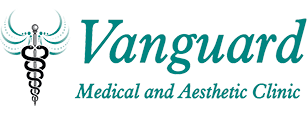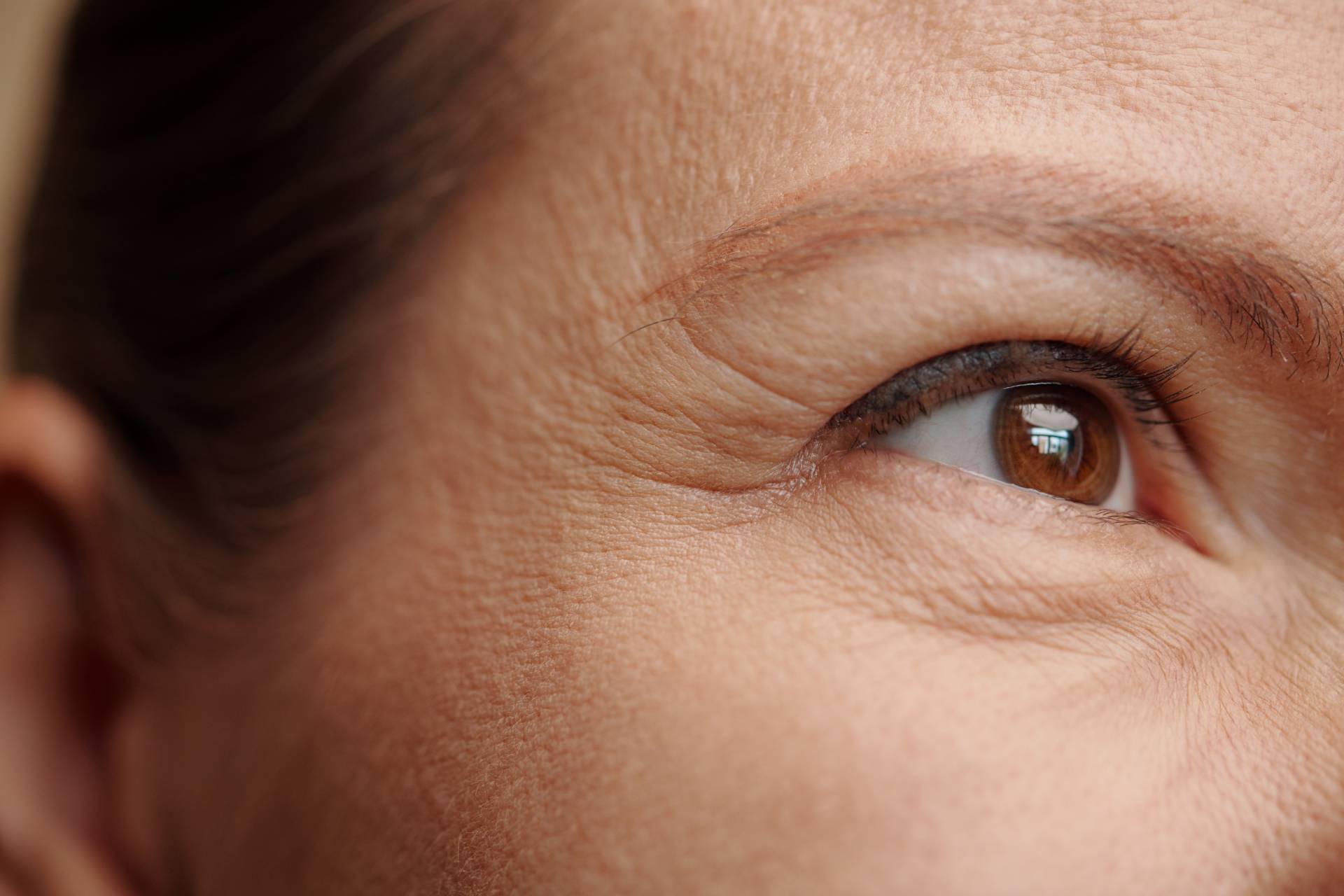Over time, you may have noticed the formation of small, fine lines and wrinkles around the outer corners of your eyes. These lines are called “crow’s feet,” as they resemble the feet of a crow. Crow’s feet are commonly associated with aging and are considered a sign of the natural aging process for several reasons:
Loss of Skin Elasticity
As we age, the production of collagen and elastin in the skin decreases. Collagen is a protein that provides structural support to the skin. During the aging process, collagen fibres become less abundant and more disorganized, leading to a loss of skin firmness and elasticity. Elastin is another protein that allows the skin to stretch and recoil. Like collagen, its production declines with age, resulting in less resilient skin that is more prone to wrinkling and sagging. The delicate skin around the eyes is particularly susceptible to these changes, resulting in the formation of crow’s feet.
Repetitive Facial Expressions
When we smile, squint, laugh, or make other facial expressions, specific muscles in our faces contract and relax. With repetitive muscle contractions, the skin around the eyes experiences continuous folding and creasing. Over time, these repetitive movements lead to the formation of lines and wrinkles, particularly in areas where the skin is thin and delicate, such as the outer corners of the eyes. As the skin naturally loses elasticity during the aging process, it is less able to bounce back after being stretched or creased. As a result, the lines and wrinkles caused by repetitive facial expressions become more pronounced and permanent.
Exposure to Environmental Factors
Factors such as sun exposure, pollution, smoking, and poor skincare habits can accelerate the aging process of the skin. Prolonged exposure to the sun’s ultraviolet (UV) radiation damages the skin’s collagen and elastin fibres, leading to a loss of elasticity and firmness. As a result, the skin becomes more prone to wrinkling and sagging, including the formation of crow’s feet. Air pollution can also contribute to skin aging. Pollutants can penetrate the skin and induce inflammation, oxidative stress, and collagen degradation, ultimately accelerating the formation of wrinkles. Other environmental factors, such as low humidity, wind, and indoor heating or air conditioning, can dry out the skin, making it more prone to wrinkles and fine lines. When the skin lacks adequate moisture, it becomes less pliable and more susceptible to creasing, particularly in areas where facial expressions occur frequently, such as around the eyes.
Genetic Predisposition
Genetics can play a role in how our skin ages and the likelihood of developing wrinkles by influencing factors such as skin type, collagen and elastin production, facial anatomy, and intrinsic aging processes. Variations in these genetic factors can affect the skin’s elasticity, thickness, and susceptibility to wrinkles, including crow’s feet. Individuals with genetic predispositions that result in lower collagen and elastin production, thinner skin, or differences in facial anatomy may be more prone to developing crow’s feet at an earlier age or more prominently, regardless of external factors such as sun exposure or lifestyle choices.
While crow’s feet are a natural part of aging, certain preventive measures and treatments, such as Botox injections, sunscreen, moisturizers, and other skincare products, can help minimize their appearance and delay their onset. Consulting with a qualified professional can provide you with personalized recommendations and treatments based on your specific needs and skin concerns. A professional can assess the severity of your crow’s feet, identify contributing factors, and recommend appropriate interventions, such as cosmetic procedures or lifestyle modifications, to help minimize their appearance and prevent further progression. Additionally, a qualified professional can ensure the safety and efficacy of any treatments performed, reducing the risk of complications and optimizing results.

